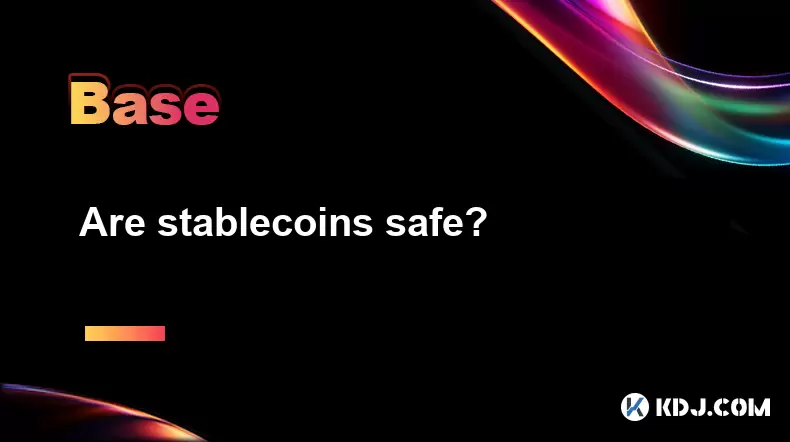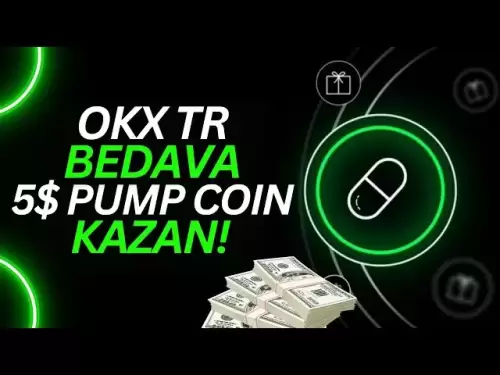-
 Bitcoin
Bitcoin $117400
-0.46% -
 Ethereum
Ethereum $3768
0.60% -
 XRP
XRP $3.551
2.09% -
 Tether USDt
Tether USDt $1.000
0.00% -
 Solana
Solana $203.2
11.30% -
 BNB
BNB $770.9
1.92% -
 USDC
USDC $0.9999
0.01% -
 Dogecoin
Dogecoin $0.2709
-0.02% -
 Cardano
Cardano $0.9024
4.49% -
 TRON
TRON $0.3139
0.60% -
 Hyperliquid
Hyperliquid $45.60
-1.41% -
 Stellar
Stellar $0.4730
-1.34% -
 Sui
Sui $4.025
2.15% -
 Chainlink
Chainlink $19.79
2.19% -
 Hedera
Hedera $0.2724
-2.39% -
 Avalanche
Avalanche $25.93
3.05% -
 Bitcoin Cash
Bitcoin Cash $524.0
-1.83% -
 Shiba Inu
Shiba Inu $0.00001558
0.50% -
 Litecoin
Litecoin $116.7
-0.30% -
 UNUS SED LEO
UNUS SED LEO $8.996
0.00% -
 Toncoin
Toncoin $3.334
1.83% -
 Polkadot
Polkadot $4.506
0.34% -
 Uniswap
Uniswap $10.99
4.83% -
 Ethena USDe
Ethena USDe $1.001
0.03% -
 Pepe
Pepe $0.00001461
3.17% -
 Monero
Monero $320.3
-1.01% -
 Bitget Token
Bitget Token $4.935
0.36% -
 Dai
Dai $0.9998
0.00% -
 Aave
Aave $322.4
-1.25% -
 Bittensor
Bittensor $455.6
9.33%
Are stablecoins safe?
Stablecoins like USDT, USDC, and BUSD offer stable value by being pegged to assets like the U.S. dollar, but their safety depends on transparency, regulatory compliance, and secure technology.
Jul 21, 2025 at 08:28 pm

Understanding the Basics of Stablecoins
Stablecoins are a type of cryptocurrency designed to maintain a stable value, usually by being pegged to a traditional asset like the U.S. dollar, euro, or gold. Unlike Bitcoin or Ethereum, which can experience significant price volatility, stablecoins aim to provide a reliable medium of exchange and store of value within the crypto ecosystem. The most commonly used stablecoins include Tether (USDT), USD Coin (USDC), and Binance USD (BUSD).
The mechanism behind stablecoins varies depending on the type. Some are collateralized with fiat reserves, while others are backed by crypto assets or use algorithmic methods to maintain their peg. The collateralization process is critical to the safety of stablecoins, as it ensures that the issuer has sufficient reserves to honor redemptions. However, the transparency of these reserves is often a point of concern for investors and regulators alike.
Reserve Transparency and Auditing Practices
One of the primary risks associated with stablecoins is the lack of consistent and transparent auditing of their reserves. While Tether has faced scrutiny over its reserves backing, USDC is known for its monthly attestation reports provided by Grant Thornton, a major accounting firm. These reports verify the cash and cash equivalents held by Circle, the issuer of USDC.
However, not all stablecoins undergo the same level of third-party scrutiny. Many smaller or newer stablecoins may not publish regular audits, raising concerns about their solvency and liquidity. Investors should look for stablecoins that provide clear, real-time reserve data and are open to independent audits. The absence of transparency can lead to loss of confidence, which may trigger mass redemptions and destabilize the peg.
Regulatory Risks and Legal Challenges
The regulatory environment for stablecoins is still evolving, and this uncertainty poses a significant risk to their safety. Governments and financial regulators around the world are increasingly scrutinizing stablecoins due to their potential impact on monetary policy, financial stability, and consumer protection. In the United States, proposals like the Stablecoin Transparency Act aim to impose stricter reserve requirements and reporting obligations on stablecoin issuers.
In some jurisdictions, regulators have expressed concerns about money laundering, terrorist financing, and systemic risks posed by large-scale stablecoin operations. If a major stablecoin were to face regulatory restrictions or legal action, it could lose its peg or become unavailable to users in certain regions. Therefore, users should be aware of the legal status of stablecoins in their jurisdiction and understand the potential risks of regulatory changes.
Smart Contract and Technology Risks
While stablecoins are generally less volatile than other cryptocurrencies, they are not immune to technical vulnerabilities. Many stablecoins operate on blockchain networks, and as such, they are exposed to smart contract risks. A bug, exploit, or coding error in the smart contract that governs a stablecoin could lead to funds being stolen or locked permanently.
For example, in 2022, the TerraUSD (UST) algorithmic stablecoin collapsed due to flaws in its design, leading to the loss of billions of dollars. While UST was an algorithmic stablecoin, which is inherently riskier than collateralized ones, even fiat-backed stablecoins are not entirely free from technical risks. Users should consider the security audits performed on the smart contracts and the blockchain network they rely on.
Counterparty and Issuer Risks
Another critical factor in assessing the safety of stablecoins is the credibility and reliability of the issuer. If the company or entity behind a stablecoin becomes insolvent, faces legal issues, or mismanages its reserve assets, the stablecoin could lose its value or become unredeemable. This is known as counterparty risk.
For instance, if a stablecoin issuer commingles funds or invests reserves in high-risk assets, it may not be able to meet redemption requests during times of market stress. Investors should evaluate the issuer’s financial health, governance structure, and track record before holding or transacting with a particular stablecoin. Decentralized stablecoins, like DAI, attempt to mitigate this risk by relying on over-collateralized crypto assets rather than centralized entities.
Use Cases and Practical Safety Considerations
Stablecoins are widely used for trading, remittances, yield farming, and cross-border transactions. For traders, they offer a way to exit volatile markets without converting to fiat. For remittance users, they provide a low-cost alternative to traditional money transfer services. However, the safety of using stablecoins in these scenarios depends on several factors.
When using stablecoins for trading, it’s essential to choose reputable exchanges that support well-audited stablecoins. For remittances, users should ensure that the recipient has access to platforms that accept the stablecoin being sent. In yield farming, investors should be cautious about platform risks, smart contract vulnerabilities, and liquidity issues. Always research the project, team, and security measures before committing funds.
Frequently Asked Questions
Q: What happens if a stablecoin issuer goes bankrupt?
If a stablecoin issuer becomes insolvent, the reserves backing the stablecoin may be used to redeem outstanding tokens. However, the outcome depends on the legal structure, jurisdiction, and creditor priority. Holders may face delays or partial recovery of their funds.
Q: Can stablecoins be hacked?
While stablecoins themselves are not typically targets of hacking, the blockchains or smart contracts they rely on can be vulnerable. Decentralized exchanges, wallets, and bridges are common targets for cyberattacks, which could indirectly affect stablecoin holders.
Q: Are all stablecoins backed by fiat currency?
No, not all stablecoins are fiat-backed. Some are crypto-collateralized, meaning they are backed by other cryptocurrencies, while others are algorithmic, using smart contracts to maintain their peg without physical reserves.
Q: How do I verify the reserves of a stablecoin?
You can check the official website of the stablecoin issuer for audit reports, reserve disclosures, and third-party attestations. Some platforms also offer real-time reserve tracking dashboards to enhance transparency.
Disclaimer:info@kdj.com
The information provided is not trading advice. kdj.com does not assume any responsibility for any investments made based on the information provided in this article. Cryptocurrencies are highly volatile and it is highly recommended that you invest with caution after thorough research!
If you believe that the content used on this website infringes your copyright, please contact us immediately (info@kdj.com) and we will delete it promptly.
- MoonBull's Whitelist Mania: Your Last Shot at 100x Crypto Gains?
- 2025-07-22 10:30:12
- Meme Coins in 2025: Explosive Gains or Fading Fad?
- 2025-07-22 10:30:12
- Kim Keon-hee Crypto Probe: Scandal Rocks South Korea's Political Scene
- 2025-07-22 10:50:12
- ETH Holders in Profit: Value Surge Fuels Bullish Sentiment
- 2025-07-22 09:30:13
- NEAR Protocol's AI Leap: Double-Digit Gains and Future Potential
- 2025-07-22 09:30:13
- Cryptos, Meme Coins, Buy Now: Riding the Wave of Hype
- 2025-07-22 08:30:13
Related knowledge

What is the difference between CeFi and DeFi?
Jul 22,2025 at 12:28am
Understanding CeFi and DeFiIn the world of cryptocurrency, CeFi (Centralized Finance) and DeFi (Decentralized Finance) represent two distinct financia...

What is the difference between a sidechain and a Layer 2?
Jul 20,2025 at 11:35pm
Understanding the Concept of SidechainsA sidechain is a separate blockchain that runs parallel to the main blockchain, typically the mainnet of a cryp...

What is the Inter-Blockchain Communication Protocol (IBC)?
Jul 19,2025 at 10:43am
Understanding the Inter-Blockchain Communication Protocol (IBC)The Inter-Blockchain Communication Protocol (IBC) is a cross-chain communication protoc...

How does sharding improve scalability?
Jul 20,2025 at 01:21am
Understanding Sharding in BlockchainSharding is a database partitioning technique that is increasingly being adopted in blockchain technology to enhan...

What is the "crypto trilemma" of scalability, security, and decentralization?
Jul 19,2025 at 06:28pm
Understanding the Concept of the Crypto TrilemmaThe crypto trilemma refers to the challenge of simultaneously achieving scalability, security, and dec...

What is a cliff and vesting schedule in tokenomics?
Jul 20,2025 at 10:28am
What Does a Cliff Mean in Tokenomics?In tokenomics, a cliff refers to a specific period during which token holders are not allowed to access or transf...

What is the difference between CeFi and DeFi?
Jul 22,2025 at 12:28am
Understanding CeFi and DeFiIn the world of cryptocurrency, CeFi (Centralized Finance) and DeFi (Decentralized Finance) represent two distinct financia...

What is the difference between a sidechain and a Layer 2?
Jul 20,2025 at 11:35pm
Understanding the Concept of SidechainsA sidechain is a separate blockchain that runs parallel to the main blockchain, typically the mainnet of a cryp...

What is the Inter-Blockchain Communication Protocol (IBC)?
Jul 19,2025 at 10:43am
Understanding the Inter-Blockchain Communication Protocol (IBC)The Inter-Blockchain Communication Protocol (IBC) is a cross-chain communication protoc...

How does sharding improve scalability?
Jul 20,2025 at 01:21am
Understanding Sharding in BlockchainSharding is a database partitioning technique that is increasingly being adopted in blockchain technology to enhan...

What is the "crypto trilemma" of scalability, security, and decentralization?
Jul 19,2025 at 06:28pm
Understanding the Concept of the Crypto TrilemmaThe crypto trilemma refers to the challenge of simultaneously achieving scalability, security, and dec...

What is a cliff and vesting schedule in tokenomics?
Jul 20,2025 at 10:28am
What Does a Cliff Mean in Tokenomics?In tokenomics, a cliff refers to a specific period during which token holders are not allowed to access or transf...
See all articles

























































































